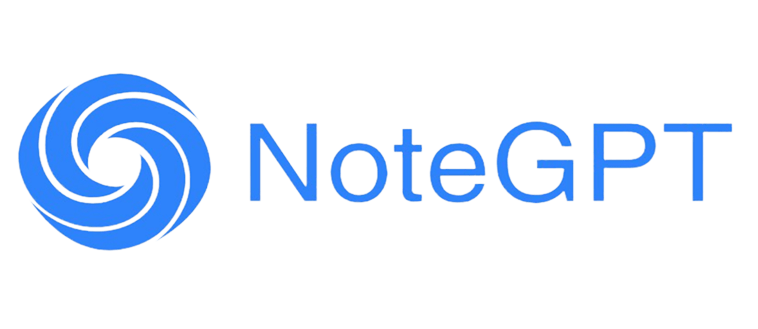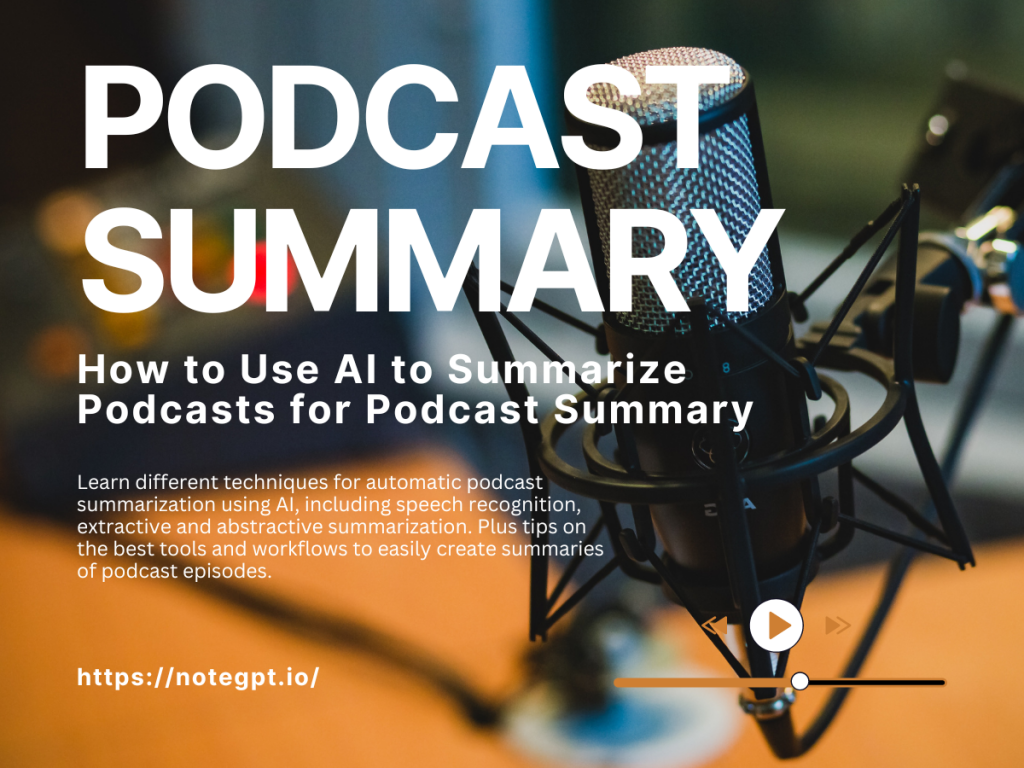Podcasts have exploded in popularity over the past few years. With over one million active podcasts and over 48 million episodes as of 2022, there is a huge amount of great content being produced. However, with such an overwhelming amount of content, it can be challenging to consume it all or even know where to start. This is where AI-powered podcast summarization comes in.
In this blog post, I will explain what podcast summarization is, why it’s useful, different techniques for automatic summarization, and provide actionable tips on how you can leverage AI tools to easily create podcast summaries. Whether you’re a podcaster looking to create easily digestible episode summaries or a listener looking to get the key insights from your favorite shows more efficiently, this guide will help you utilize podcast summarization effectively.
What is Podcast Summarization and Why is it Useful?
Podcast summarization refers to condensing longer form podcast audio content into a short, text-based summary highlighting just the key points. The goal is to enable efficient knowledge extraction for the listener while preserving the core narrative and insights.
Here are some of the main benefits of creating podcast summaries:
Enable Quick Scanning of Episodes
Rather than spending an hour listening to an entire podcast episode, a 5 minute summary scan can provide the key insights, arguments, and narratives covered by the hosts. This allows listeners with limited time to still stay up to date on their favorite podcasts.
Surface Only the Relevant Parts
Podcast episodes frequently contain some filler conversations, banter or repetitions. Summaries filter all that out and only focus on the most topical moments from an episode.
Create Content for Further Sharing
Podcast fans often want to efficiently discuss and share key insights from episodes with friends and colleagues. Written summaries make this much easier over text or social platforms rather than having to timestamp and reference long audio clips.
Accessibility for Non-Audio Situations
Reading a summary is more accessible in many situations like meetings, libraries or public places where playing audio out loud may not be suitable. Similarly, those with hearing impairments can benefit greatly from concise, written summaries as companions to audio podcast episodes.
Techniques for Automated Podcast Summarization
There are a few key technical approaches used to algorithmically generate podcast summaries:
Speech Recognition
The first step is to transcribe the spoken audio content into text via automated speech recognition (ASR). Popular services like Amazon Transcribe, Google Cloud Speech-to-Text or AssemblyAI provide highly accurate speech-to-text for many languages. The output text can then be summarized.
Extractive Summarization
This technique analyzes textual transcripts of podcasts episodes and extracts key snippets verbatim that contain the semantic essence of the content. These extracts are collated to create a summary focusing only on the most salient pieces of information.
Abstractive Summarization
In contrast to extractive methods, abstractive summarization aims to generate completely new written content that captures the meaning and key ideas discussed without directly reusing the original text. This requires more advanced NLP techniques but results in more readable, succinct summaries.
Hybrid Approaches
Most practical summarization workflows use a hybrid approach drawing on aspects of both extractive and abstractive techniques. Key semantic excerpts might be identified extractively before being edited and consolidated into smooth-flowing abstractive summaries targeted to meet specified length or coverage constraints.
How to Use AI to Create Podcast Summaries
Now that we’ve covered the basics, let’s look at how you can start creating podcast summaries powered by AI summarization technology:
Step 1 - Transcribe Podcast Audio to Text
The first step for any summarization is to get your raw podcast episodes transcribed into text formats that algorithms can analyze semantic content on. There are several great services that offer automated speech recognition (ASR) transcription tuned for high accuracy on podcast audio:
- AssemblyAI - Offers affordable and very accurate ASR trained on podcast-style speech. Good for summarizing batch episodes.
- Descript Podcast Transcription - Specialized ASR tuned for podcast audio combined with an intuitive editor. Better for manual review and touch ups.
- Amazon Transcribe - Scalable and accurate but more expensive at scale than other options. Integrates well for AWS-based workflows.
I recommend starting with AssemblyAI or Descript to get time-stamped transcript text from your podcast audio files. Most summarization services accept common formats like VTT, SRT, simple JSON or raw text.
Step 2 – Run Transcripts Through Summarization Tools
Once you have text transcripts of your podcast episodes, it’s time to run them through an AI summarization tool to condense them down to only the key points. Here are some top services to check out:
- NoteGPT - My #1 pick for podcast summarization. Allows highlighting key moments in transcripts and automatically generating tidy summaries from selections. Really intuitive workflow.
- Readable - Web app and APIs for summarizing documents and web pages using advanced algorithms. Could work for long-form podcast transcripts.
- Listen Notes - Podcast search engine that also summarizes some podcast episodes to present key insights. But no options for summarizing your own custom shows.
- Amazon Sumerian - Part of Amazon’s suite of AI services. Robust summarization APIs but requires more coding.
- Resoomer - A simpler web-based tool for generating summaries of documents, articles or blocks of text. lightweight option.
The ideal workflow is to first run your ASR transcript text through Otter’s editor to select key highlights then leverage their summarization to produce clean summaries incorporating those pivotal moments. For advanced users, tools like Readable allow great customization of summary parameters.
Step 3 - Optionally Edit and Export Summaries
Review the AI-generated summaries and optionally make any final edits to polish language, fix any errors, or improve flow and structure before exporting and sharing with your podcast audience.
Many summarization tools provide confidence scores on sections indicating if the algorithms had trouble interpreting particular passages. Fixing those sections with human review ensures your final summaries are high-quality.
Most summarization services allow exporting the finished summaries as simple text/word documents, HTML, PDFs or popular formats like Markdown. This enables easy sharing via email newsletters, blogging platforms, social media or directly on your podcast host site.
Descript even allows exporting summaries automatically attached to the original podcast audio for a very seamless listening experience presenting both audio and summaries in sync!
Podcast Summary Tips and Best Practices
Here are some additional tips for getting the most out of AI tools when creating podcast summaries:
- Tune accuracy with training data - Some summarization APIs allow providing sample “ground truth” summaries to tune algorithms for your podcast style and topics. This can dramatically boost accuracy.
- Combine multiple approaches - Try generating summaries with multiple techniques and tools, then compile the best parts from each into finished summaries for optimal quality.
- Customize summary length - When possible, specify target summary lengths (e.g. 250 words) or key section requirements based on your audience’s consumption preferences.
- Enrich with images & links - Include relevant images and links to deep dives to make your podcast summaries more engaging and valuable for referencing.
- Curate highlights regularly - Summarize latest episodes right when they are released to build interest and retention with timely, entertaining summaries.
Conclusion
I hope this guide provided a good overview of how you can start leveraging AI tools like speech recognition and summarization algorithms to efficiently generate podcast summaries. With the right workflows, you can save huge amounts of editorial time while actually increasing engagement and visibility of your shows by offering easily digestible, shareable summaries for each episode.
The key is finding intuitive tools that allow efficient transcription, key moment highlighting, and summary generation and export so you can focus on content rather than technical complexity. Solutions like Otter.ai combined with tuning summarization parameters make producing great summaries at scale a breeze.
Give some of these AI podcast summarization approaches a try with your next few episodes and I think you’ll be amazed at how quick yet high quality the results will be! Please reach out if you have any other questions on best practices for producing podcast summaries at scale.

